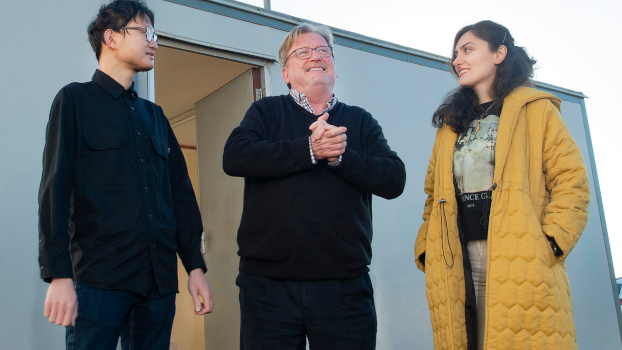
International Energy Research Centre looks on the bright side for health benefits
Researchers at the International Energy Research Centre (IERC) are developing novel daylight enhancing techniques to improve health and wellness while also potentially eliminating the use of electrical lighting during the day.
The health and wellness benefits of exposure to natural daylight have long been recognised. Accessing the right levels of natural light at the appropriate time of day can improve our alertness, mood, productivity, sleep patterns and many aspects of our physiology. Properly maintaining daylight-driven circadian rhythms requires a complex combination of light intensity, duration and timing of exposure to daylight. While adding additional windows to buildings could seem to be a simple solution, cloudy conditions, such as those we enjoy in Ireland, add some additional complexities.
The IERC research team at Tyndall National Institute, based at University College Cork, is developing novel daylight enhancing techniques, which can be used even when skies are very cloudy and overcast, which will improve the health and wellness of occupants. This research also addresses the need for greater energy efficiency in buildings as making use of natural light can save up to 75% of the energy used in artificial lighting.
Supported by the Velux Foundation, the team is developing the world’s first luminescent devices that can directly capture, concentrate and spread daylight deeper into buildings as well as modifying the light’s spectrum to meet the requirements of the non-visual receptors in our eye that control our circadian rhythms. Their unique approach extends the length of time occupants have access to the luminance level required to maintain healthily synchronised biorhythms.
Proect lead Prof Brian Norton, Tyndall National Institute, said: “Using quantum dots that absorb then remit solar energy, we will be able to concentrate daylight intensity, even under overcast skies, and modify it so it can spread deeper into a building. These luminescent systems will extend the period for which daylight can be used, resulting in improved biorhythmic health for occupants, as well as displacing the energy and greenhouse gas emissions associated with artificial lighting, which can be up to 20% of a commercial building’s energy use.”
TechCentral Reporters








Subscribers 0
Fans 0
Followers 0
Followers